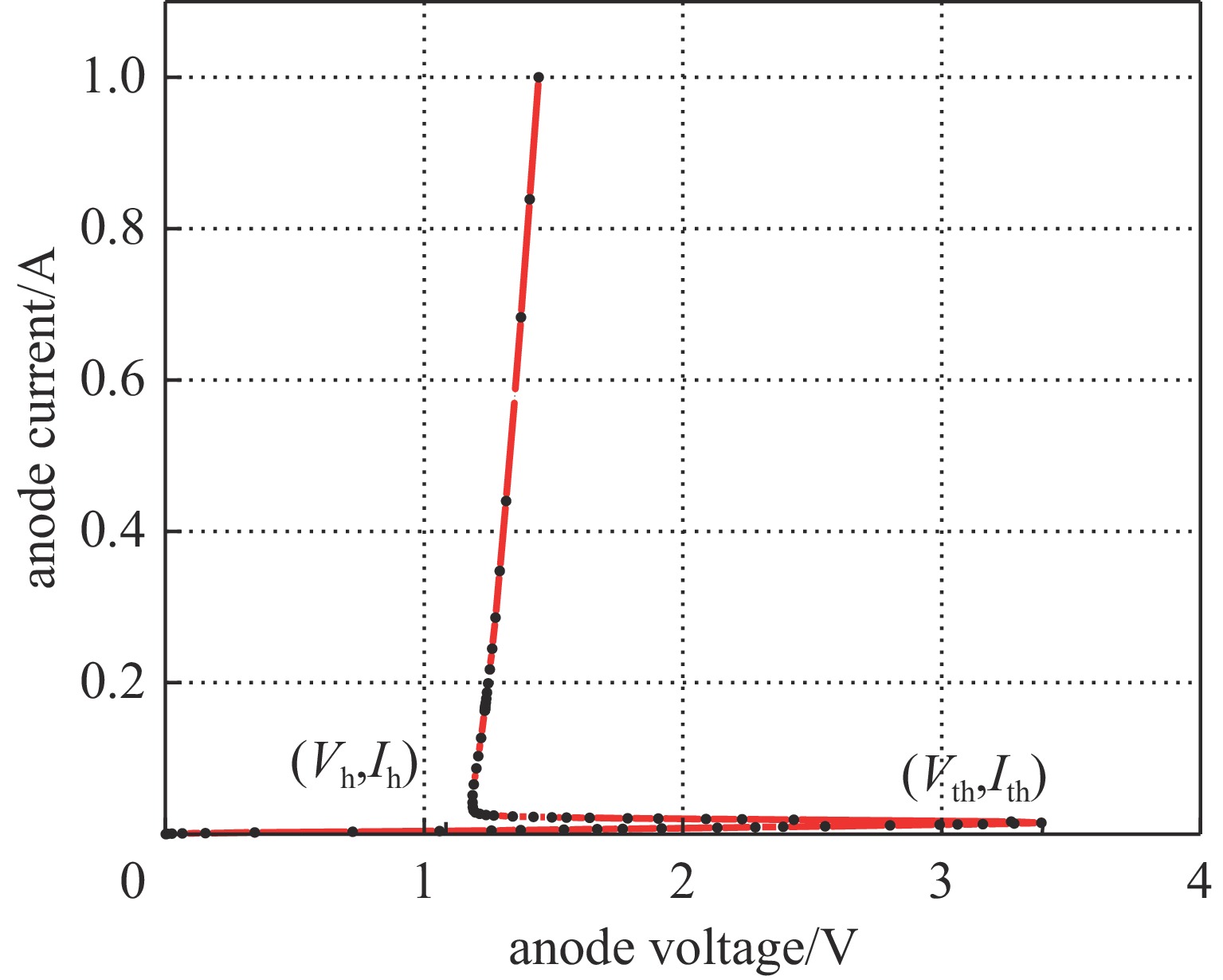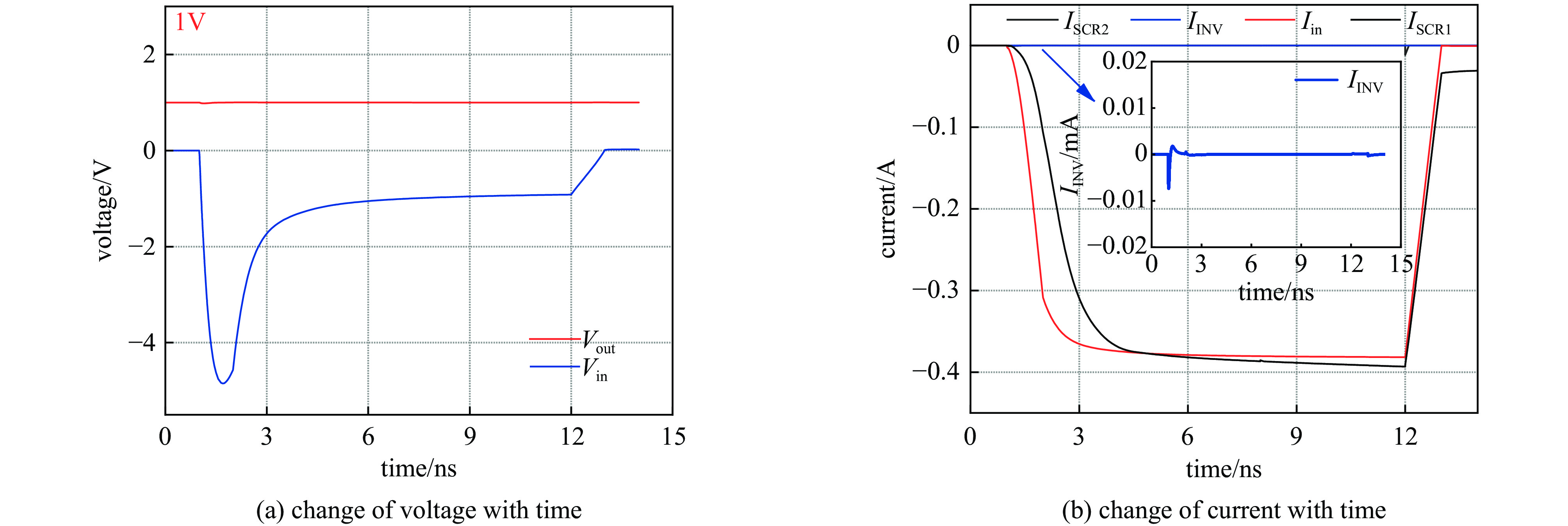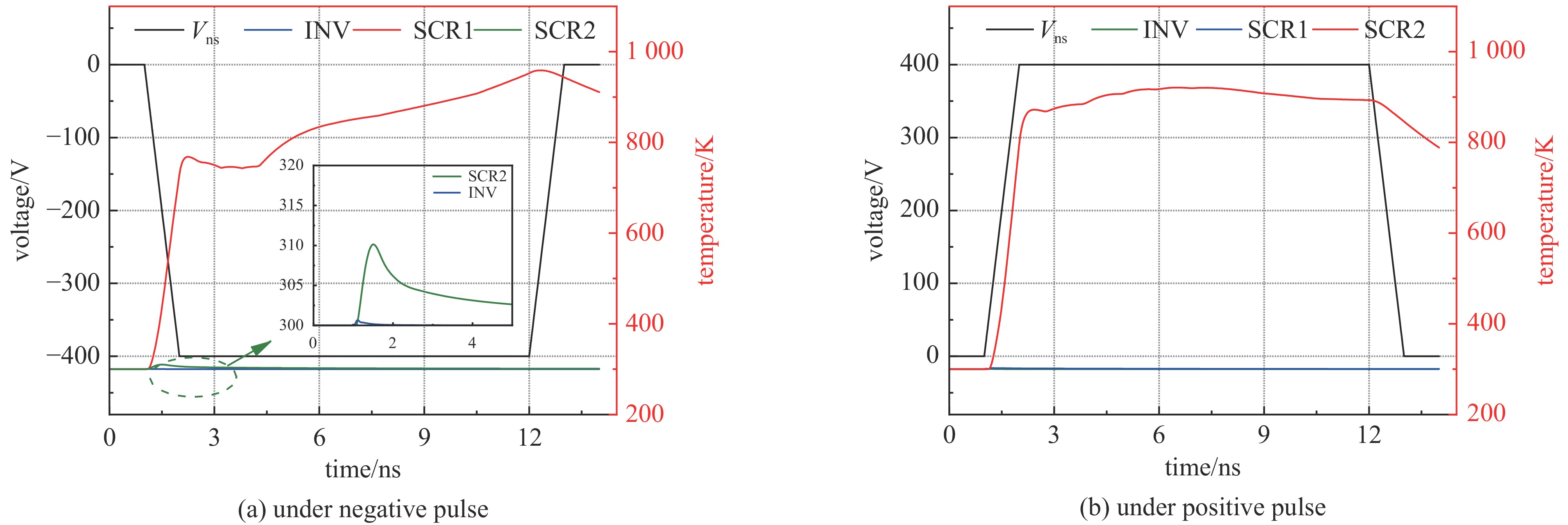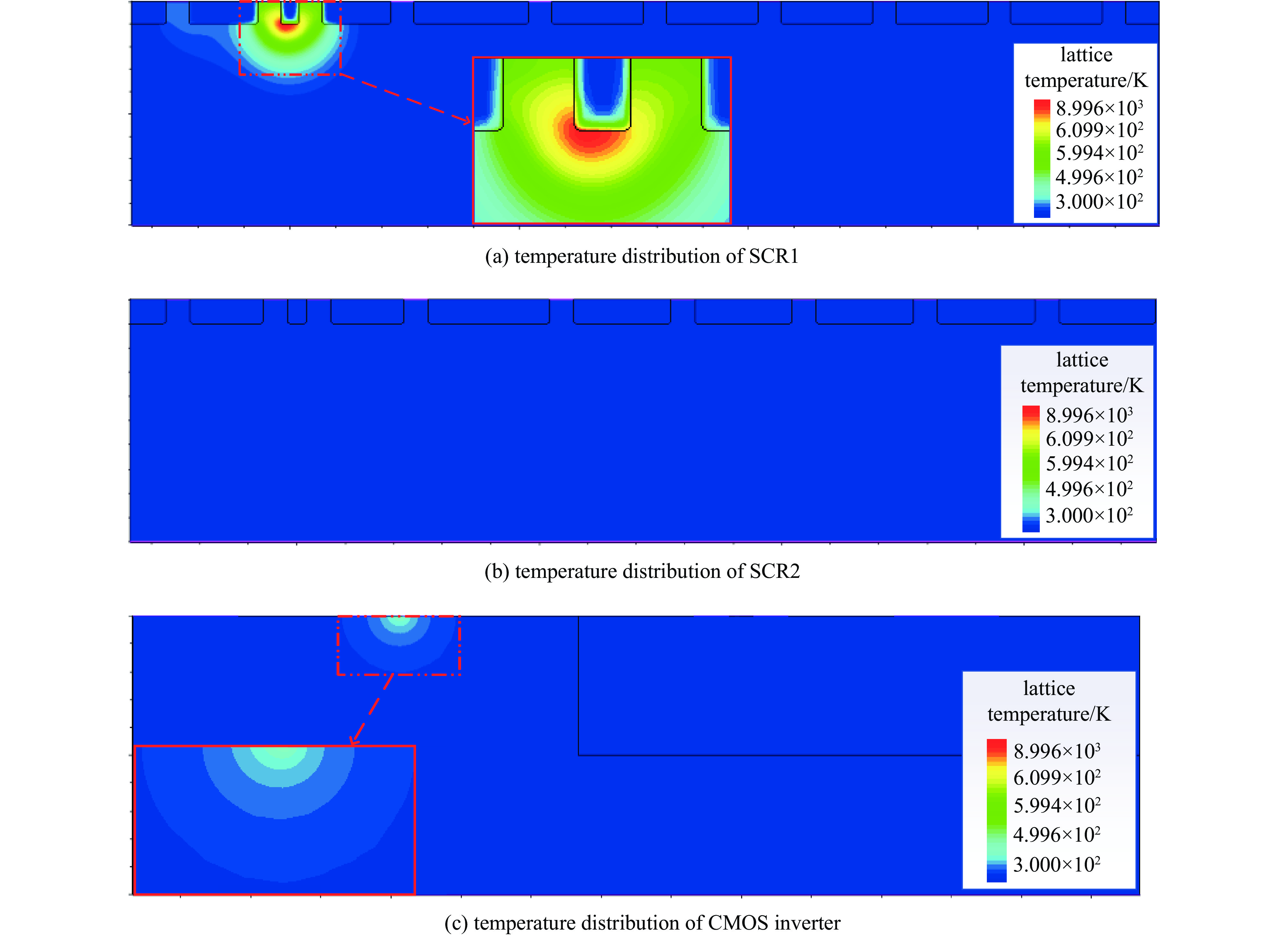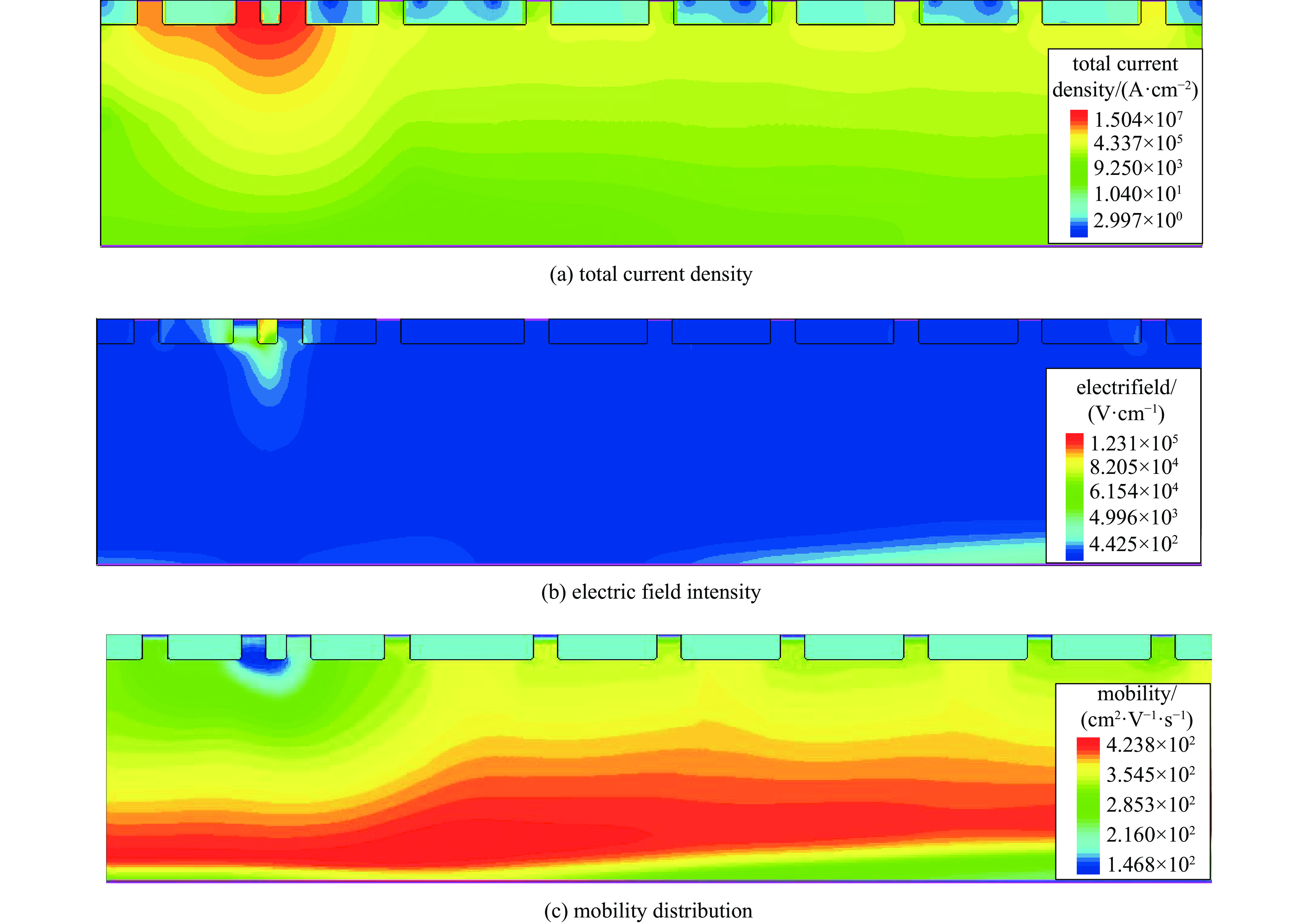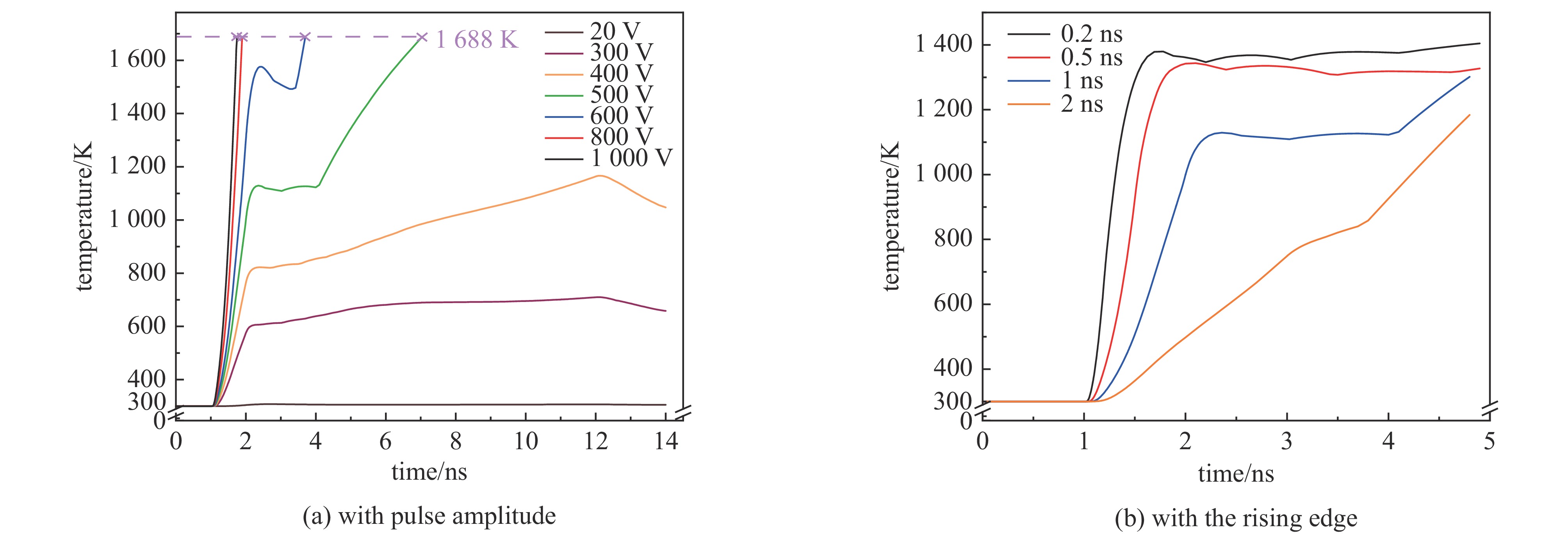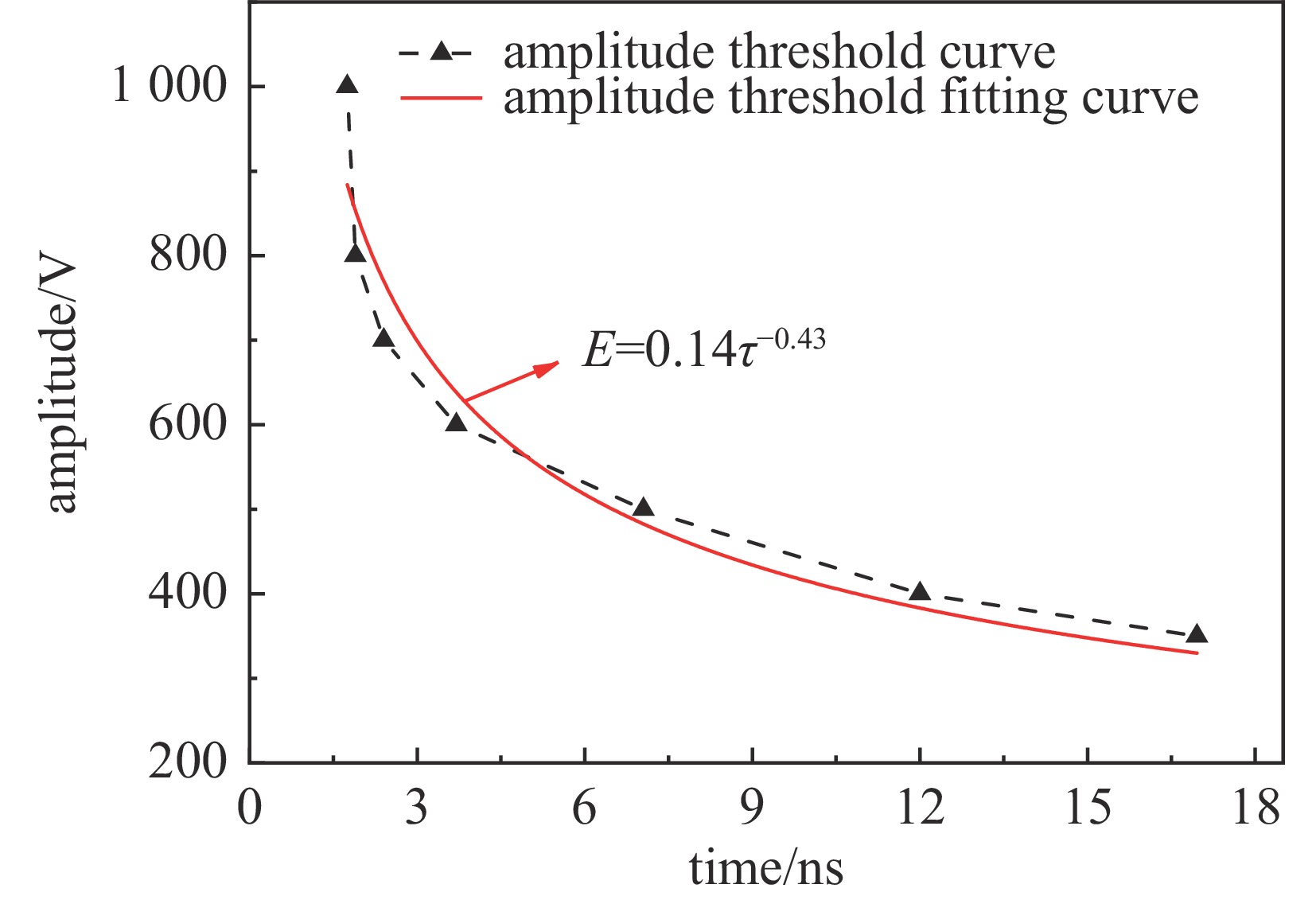Effect and mechanism of on-chip electrostatic discharge protection circuit under fast rising time electromagnetic pulse
-
摘要:
静电放电(ESD)保护电路广泛存在于CMOS数字电路输入与输出端口,耦合进入设备内部的快上升前沿电磁脉冲(FREMP)在与CMOS电路作用的同时,也不排除作用于防护电路。建立了片上CMOS静电放电保护电路模型并且选取方波作为电磁脉冲信号,从多物理参数模型刻画了器件内部的晶格温度,电流密度以及电场强度分布。探讨了在电磁脉冲注入下电路内部器件的变化,并描述了损伤幅度阈值与脉冲宽度之间的关系。结果表明,在FREMP作用下,CMOS电路中的ESD保护电路模块存在潜在的损伤风险,FREMP的注入导致电路内部发生不可恢复的热损失。此外不同属性的脉冲信号会改变电路的损伤阈值。这些结果对一步评估电磁环境对芯片内部的影响提供了重要参考,有助于开展ESD保护电路的可靠性增强研究。
Abstract:The electrostatic discharge (ESD) protection circuit widely exists in the input and output ports of CMOS digital circuits, and fast rising time electromagnetic pulse (FREMP) coupled into the device not only interacts with the CMOS circuit, but also acts on the protection circuit. This paper establishes a model of on-chip CMOS electrostatic discharge protection circuit and selects square pulse as the FREMP signals. Based on multiple physical parameter models, it depicts the distribution of the lattice temperature, current density, and electric field intensity inside the device. At the same time, this paper explores the changes of the internal devices in the circuit under the injection of fast rising time electromagnetic pulse and describes the relationship between the damage amplitude threshold and the pulse width. The results show that the ESD protection circuit has potential damage risk, and the injection of FREMP leads to irreversible heat loss inside the circuit. In addition, pulse signals with different attributes will change the damage threshold of the circuit. These results provide an important reference for further evaluation of the influence of electromagnetic environment on the chip, which is helpful to carry out the reliability enhancement research of ESD protection circuit.
-
[1] Backstrom M G, Lovstrand K G. Susceptibility of electronic systems to high-power microwaves: summary of test experience[J]. IEEE Trans Electromagn Compat, 2004, 46(3): 396-403. doi: 10.1109/TEMC.2004.831814 [2] Bayram Y, Chang P C, Volakis J L, et al. High power EMI on digital circuits within automotive structures[C]//2006 IEEE International Symposium on Electromagnetic Compatibility. 2006: 507-512. [3] Hoad R, Carter N J, Herke D, et al. Trends in EM susceptibility of IT equipment[J]. IEEE Trans Electromagn Compat, 2004, 46(3): 390-395. doi: 10.1109/TEMC.2004.831815 [4] Deng Feng, Ding Fan, Zheng Shengquan. Research on FREMP protection module in RF channel of HF/VHF band[C]//2011 4th IEEE International Symposium on Microwave, Antenna, Propagation and EMC Technologies for Wireless Communications. 2011: 520-523. [5] Gao Yuexin, Cai Xiaowu, Han Zhengsheng, et al. Design of compact-diode-SCR with low-trigger voltage for full-chip ESD protection[J]. Microelectron Reliab, 2023, 140: 114860. doi: 10.1016/j.microrel.2022.114860 [6] Vault W L. The damage susceptibility of integrated circuits to a simulated IEMP transient[J]. IEEE Trans Nucl Sci, 1973, 20(6): 40-47. doi: 10.1109/TNS.1973.4327371 [7] Sun Yi, Chai Changchun, Liu Yuqian, et al. Upset and damage effects and mechanisms of CMOS NAND gate caused by electromagnetic pulses[J]. High Power Laser Part Beams, 2021, 33: 103006. [8] Wang Chenkun, Zhang Feilong, Lu Fei, et al. A comparison study of DTSCR by TCAD and VFTLP for CDM ESD protection[C]//2017 IEEE 24th International Symposium on the Physical and Failure Analysis of Integrated Circuits (IPFA). 2017: 1-4. [9] Du Feibo, Song Wenqiang, Hou Fei, et al. Augmented DTSCR with fast turn-on speed for nanoscale ESD protection applications[J]. IEEE Trans Electron Devices, 2020, 67(3): 1353-1356. doi: 10.1109/TED.2020.2965092 [10] Chen Wenyi, Rosenbaum E, Ker M D. Diode-triggered silicon-controlled rectifier with reduced voltage overshoot for CDM ESD protection[J]. IEEE Trans Device Mater Reliab, 2012, 12(1): 10-14. doi: 10.1109/TDMR.2011.2171487 [11] Ker M D, Hsu K C. Native-NMOS-triggered SCR with faster turn-on speed for effective ESD protection in a 0.13-μm CMOS Process[J]. IEEE Trans Device Mater Reliab, 2005, 5(3): 543-554. doi: 10.1109/TDMR.2005.853514 [12] Au T, Syrzycki M. Investigation of STI diodes as electrostatic discharge (ESD) protection devices in deep submicron (DSM) CMOS process[C]//2013 26th IEEE Canadian Conference on Electrical and Computer Engineering (CCECE). 2013: 1-5. [13] Wang Lei, Chai Changchun, Zhao Tianlong, et al. Mechanical-electrical synergy damage effect on GaN HEMT under high-power microwave[J]. Sci China Technol Sci, 2023, 66(8): 2373-2380. doi: 10.1007/s11431-023-2407-3 [14] Wang Lei, Chai Changchun, Li Fuxing, et al. Influence of gate voltage dependent piezoelectric polarization on damage effect of GaN HEMT induced by high power electromagnetic pulse[J]. Microelectron Reliab, 2022, 136: 114665. doi: 10.1016/j.microrel.2022.114665 [15] Masetti G, Severi M, Solmi S. Modeling of carrier mobility against carrier concentration in arsenic-, phosphorus-, and boron-doped silicon[J]. IEEE Trans Electron Devices, 1983, 30(7): 764-769. doi: 10.1109/T-ED.1983.21207 [16] Li Yanan, Tan Zhiliang. Design and research of the fast rise time electromagnetic pulse protection module based on PIN diode[J]. Acta Armamentarii, 2018, 39(10): 2066-2072. [17] Gao Lei, Chi Lei, Huang Jie. Study on the damage effect of electronic devices under electromagnetic pulse[J]. Electron Compon Inf Technol, 2021, 5(9): 66-67. [18] Li Fuxing, Chai Changchun, Liu Yuqian, et al. Study on ESD protection circuit by TCAD simulation and TLP experiment[J]. Micromachines, 2023, 14: 600. doi: 10.3390/mi14030600 [19] Liang Qishuai, Chai Changchun, Wu Han, et al. Mechanism analysis and thermal damage prediction of high-power microwave radiated CMOS circuits[J]. IEEE Trans Device Mater Reliab, 2021, 21(3): 444-451. doi: 10.1109/TDMR.2021.3104760 [20] Qin Yingshuo, Chai Changchun, Li Fuxing, et al. Study of self-heating and high-power microwave effects for enhancement-mode p-gate GaN HEMT[J]. Micromachines, 2022, 13: 106. doi: 10.3390/mi13010106 [21] Wunsch D C, Bell R R. Determination of threshold failure levels of semiconductor diodes and transistors due to pulse voltages[J]. IEEE Trans Nucl Sci, 1968, 15(6): 244-259. doi: 10.1109/TNS.1968.4325054 -




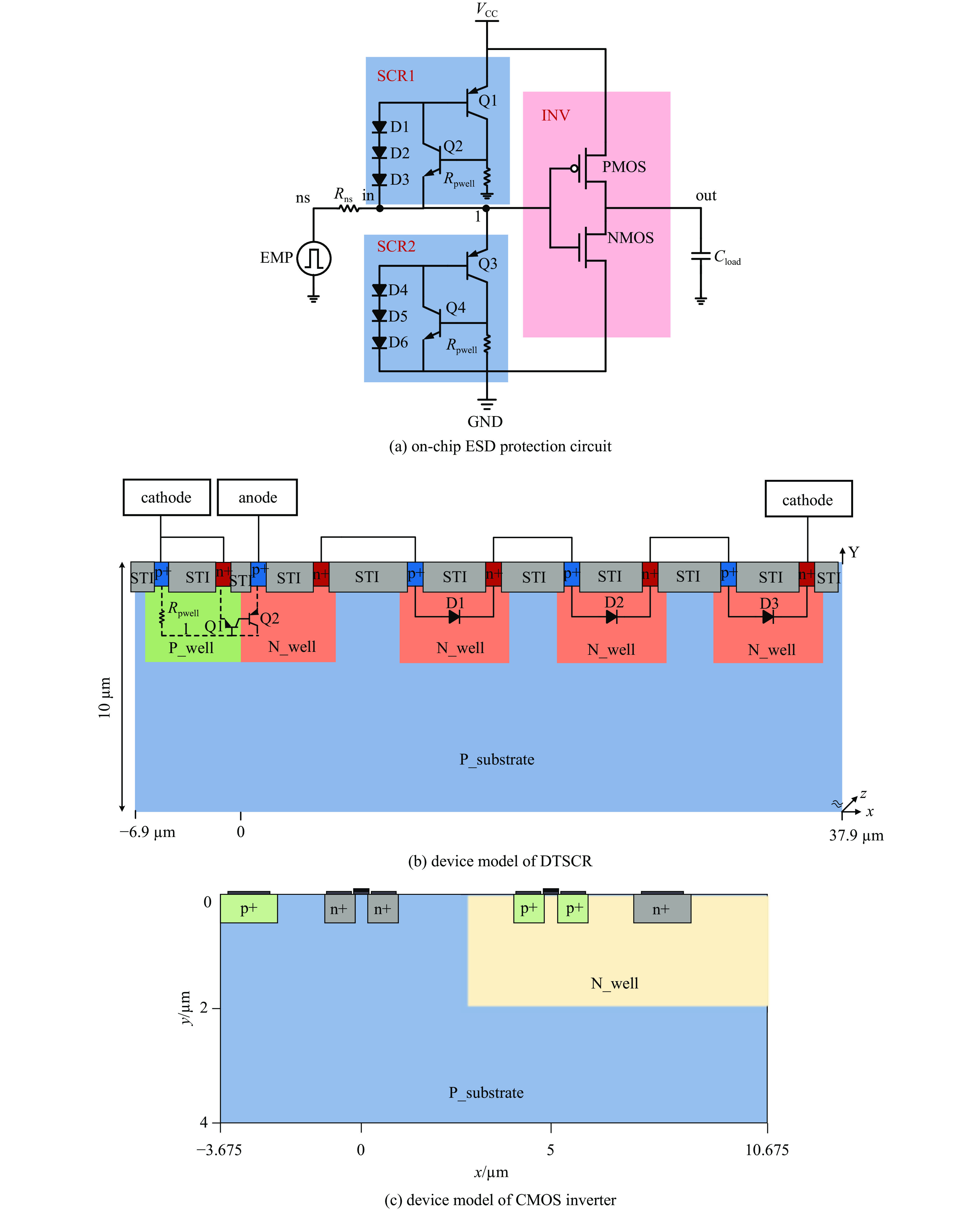
 下载:
下载:
